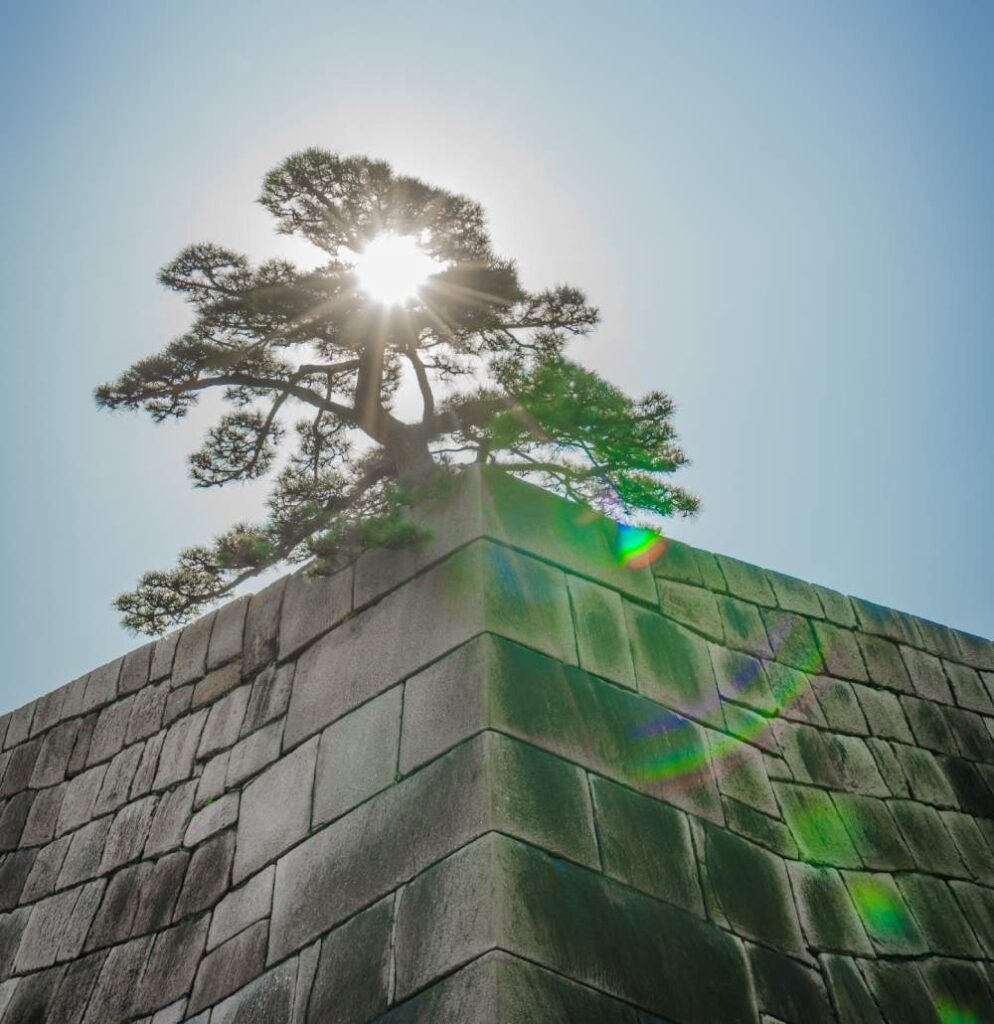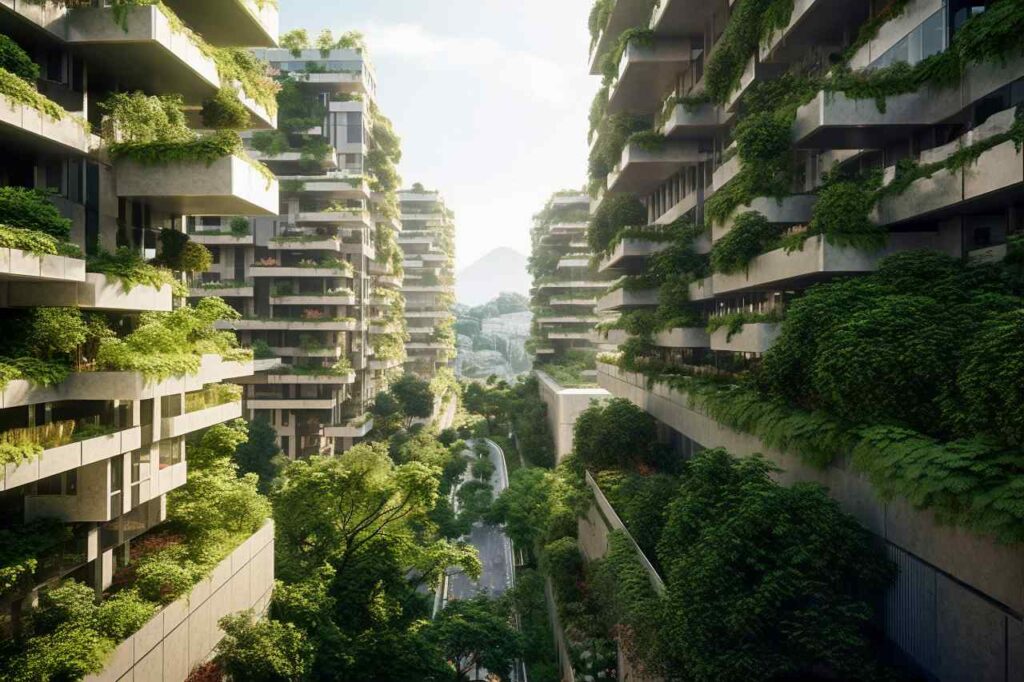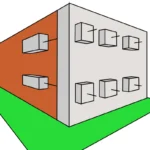In the world of engineering and architecture, the constant pursuit of sustainable and environmentally friendly solutions has led to the development of a wide range of innovative materials. One of the most notable advances in this field is the creation of “ecological bricks.” These revolutionary materials not only offer an environmentally friendly alternative but also provide numerous benefits in terms of efficiency and durability in construction.
What are ecological bricks?
Ecological bricks are building blocks manufactured with a primary focus on sustainability. Unlike traditional bricks, which are typically made of baked clay or concrete, ecological bricks are composed of a variety of environmentally friendly materials such as compressed earth, adobe, straw, hemp, construction waste, or even recycled plastic. These materials are chosen for their abundance, low cost, and their ability to reduce the carbon footprint in construction.

Advantages of ecological bricks:
Environmental Sustainability: Ecological bricks minimize the extraction of natural resources, reduce construction waste, and decrease carbon emissions associated with the manufacturing of conventional construction materials.
Energy Efficiency: These bricks offer excellent thermal and acoustic insulation, helping maintain a constant indoor temperature and saving energy in heating and cooling.
Strength and Durability: Although they may seem less robust than traditional bricks, ecological bricks are equally strong and durable when used correctly in appropriate structural designs.
Versatility: Ecological bricks can be adapted to a variety of architectural styles and applications, from simple housing to commercial and public buildings.
Competitive Cost: In many cases, ecological bricks can be a cost-effective option, especially when using local or recycled materials.
Types of Ecological Bricks for Sustainable Construction
In the world of sustainable construction, ecological bricks emerge as a promising alternative to traditional materials. These bricks, manufactured with a focus on environmental responsibility, can be classified into various types based on the materials used in their production. Some of the most common types are:
Compressed Earth Bricks (BTC): Compressed earth bricks, also known as modern adobe, are one of the oldest and most popular types of ecological bricks. They are mainly made from local soil, sand, water, and occasionally small amounts of cement or natural stabilizers. These bricks are characterized by their excellent thermal insulation capacity and versatility in constructing cost-effective buildings.
Straw Bricks: Straw bricks are a unique and sustainable option. They are composed of compressed straw within a mesh or formwork structure. These bricks are lightweight and effective as thermal insulators but require protection against moisture. They are ideal for low-impact environmental constructions and dry climates.
Hemp Bricks: Hemp bricks are gaining popularity due to their durability and exceptional thermal properties. They are made of hemp and lime, resistant to fire, mold, and insects. Additionally, they provide excellent thermal and acoustic insulation, making them ideal for energy-efficient buildings.
Recycled Plastic Bricks: To address the issue of plastic pollution, bricks have been developed from recycled plastic. These ecological bricks use recovered plastic from waste, such as PET bottles or bags, combined with other materials to create a sturdy and durable option. They are a creative way to reduce the amount of plastic in landfills and oceans.
Construction Waste Bricks: Construction waste bricks, also known as demolition bricks, are manufactured from recycled construction debris, such as concrete and ceramics. These bricks are an efficient solution for reusing construction materials and reducing waste. They are ideal for construction projects aiming to maximize sustainability.
Wooden Bricks: Wooden bricks are another innovative option, created using pressed and treated wood chips. These bricks are lightweight, insulating, and fire-resistant. They are an excellent choice for eco-friendly constructions and can reduce the demand for wood from young trees.
The Use of Ecological Bricks in Colombia
Colombia, like many other nations, is making significant efforts to embrace more sustainable and environmentally friendly construction practices. A fundamental part of this evolution in the construction sector is the growing use of so-called “ecological bricks.” These innovative materials not only contribute to reducing the environmental footprint of construction but have also become an increasingly popular choice for housing and development projects throughout the country.
Contribution to Environmental Sustainability:
Ecological bricks provide an effective response to the challenge of sustainable construction in Colombia. Given the country’s issues with deforestation and climate change, the production of traditional bricks often involves extracting clay and firing at high temperatures, leading to greenhouse gas emissions. In contrast, ecological bricks use local and recycled materials, reducing the demand for natural resources and significantly lowering carbon emissions.

Adaptation to Climatic Diversity:
Colombia is known for its climatic diversity, from the high mountains of the Andes to the warm coastal regions. Ecological bricks, with their excellent thermal insulation capacity, adapt perfectly to these climatic variations. They help maintain comfortable temperatures inside homes and reduce the need for heating and cooling, resulting in lower energy consumption and costs for homeowners.
Support for the Local Economy:
The production of ecological bricks often involves the use of local materials, such as soil, straw, or construction waste, fostering economic development in local communities. This local production reduces dependence on imported materials and creates employment in the areas where these bricks are manufactured.
Compliance with Environmental Regulations:
The Colombian government has established stricter regulations regarding sustainable construction practices and energy efficiency. The use of ecological bricks helps builders comply with these regulations, leading to the creation of more efficient and environmentally friendly buildings.
Education and Awareness:
The growing awareness of the importance of sustainability and environmental preservation has led to increased acceptance of ecological bricks in Colombia. Education and promotion of these sustainable practices play a crucial role in their adoption and in building a more environmentally responsible culture.
Projects in Colombia Using Ecological Bricks
In Colombia, several noteworthy projects have adopted the use of ecological bricks as part of their focus on sustainable construction. These projects have not only demonstrated the benefits of ecological bricks in terms of sustainability, efficiency, and costs but have also served as inspiring examples for future developments in the country. Here are some notable examples:
Casa Viva Project: Casa Viva is a sustainable housing project located in Bogotá. This project stands out for its commitment to sustainability and the use of ecological bricks. Compressed earth bricks and other sustainable materials were employed in the construction of the homes, helping reduce the carbon footprint and maintain a stable indoor temperature, benefiting residents in terms of energy efficiency and comfort.
Villa Verde Housing Complex: Located in Medellín, the Villa Verde Housing Complex is an outstanding example of sustainable housing in Colombia. This project focuses on eco-efficiency and reducing environmental impact. Hemp bricks and other ecological materials were used in the construction of the homes, contributing to energy efficiency and the well-being of residents.
Rural Housing Project in Cundinamarca: In the rural areas of Cundinamarca, rural houses have been built using compressed earth bricks. These houses are an excellent example of how ecological bricks can be an effective and affordable solution for communities looking to build sustainably. Compressed earth bricks allow local communities to use materials available in the region and reduce costs.
University of Los Andes – Engineering and Environmental Sciences Building: The University of Los Andes in Bogotá has embraced sustainability on its campus, and the Engineering and Environmental Sciences Building is a testament to this commitment. In this project, compressed earth bricks and other sustainable materials were used for construction. The building is designed to be energy and water-efficient, serving as an example of how education and research in Colombia are also focused on sustainability.
These projects in Colombia demonstrate that ecological bricks are a viable and effective option for sustainable construction in various applications, from housing to institutional buildings. These initiatives showcase the country’s commitment to sustainability and how ecological materials can contribute to building a more environmentally friendly and resource-efficient future.
Considerations When Using Ecological Bricks:
Design and Planning: It is essential to consider the specific characteristics of these materials when designing a structure. Engineering and architectural professionals must collaborate to ensure structural integrity.
Certifications and Regulations: Verify that ecological bricks comply with local and national construction regulations and standards.
Maintenance: Ensure an understanding of the maintenance requirements of these materials and provide proper training to building occupants.
Conclusion
In conclusion, ecological bricks represent an innovative and sustainable solution in the construction industry. These materials, manufactured with a variety of environmentally friendly elements, offer several key benefits. Firstly, they contribute significantly to reducing the carbon footprint and responsible use of natural resources, which is essential in an increasingly sustainability-conscious world.
Additionally, ecological bricks stand out for their energy efficiency and ability to enhance the indoor comfort of buildings. Their versatility and adaptability to different climates and applications make them an attractive choice for a variety of construction projects, from simple housing to commercial and public buildings.
This has been observed in Colombia, where ecological bricks have been a representation in sustainable construction. Emblematic projects in Colombia, such as Casa Viva, Villa Verde, and rural houses in Cundinamarca, have successfully demonstrated the viability and effectiveness of ecological bricks in various applications. Likewise, these projects exemplify Colombia’s commitment to sustainable construction and environmental preservation. The use of ecological bricks is an effective response to the environmental and climatic challenges facing the country, while promoting local economic development and sustainability awareness.






Related
Pavers in Civil Engineering
What are the Non-Mechanical Properties of Materials in Civil Engineering?
Mechanical Properties of Materials (under construction)